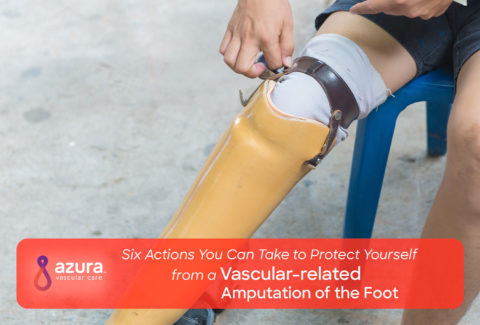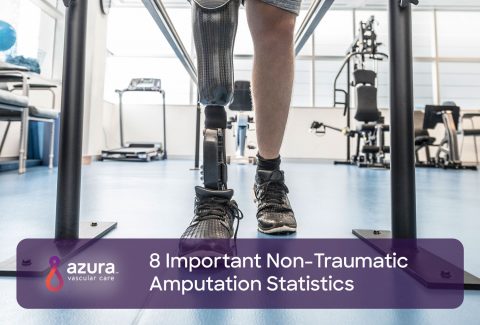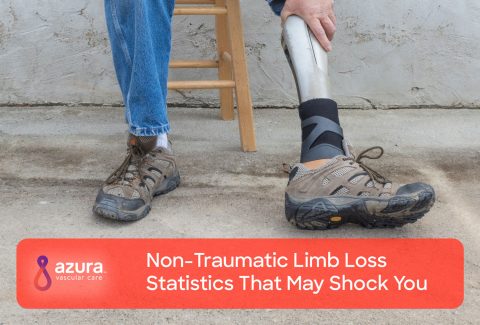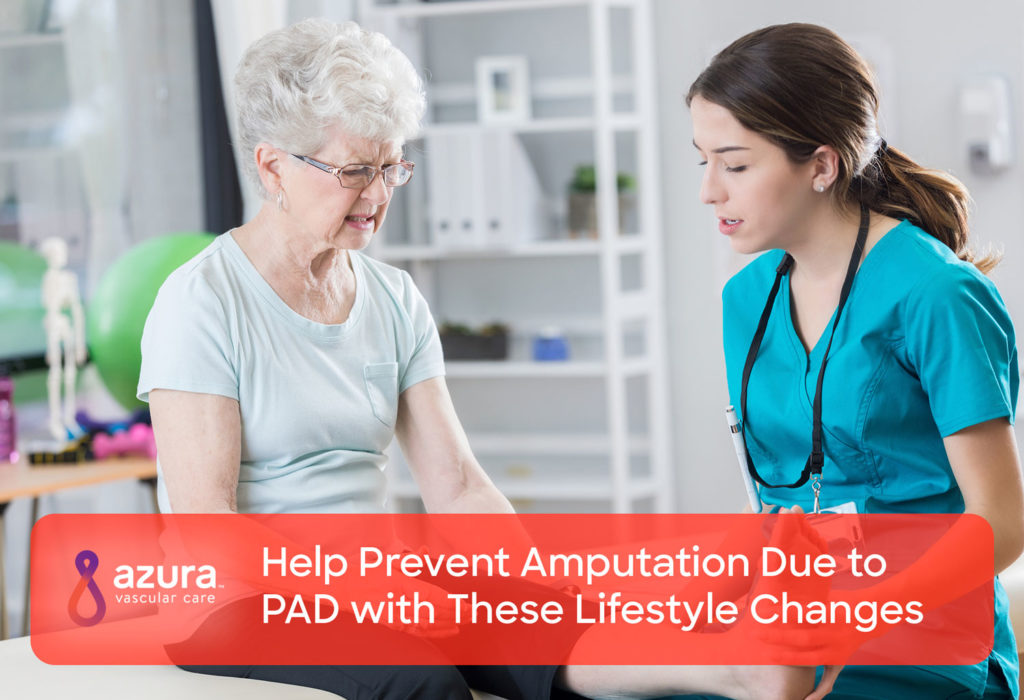
Peripheral artery disease (PAD) is caused by arteriosclerosis or “hardening of the arteries,” which occurs when fatty deposits build up on artery walls. The arteries can become stiff and narrow, decreasing blood flow in the legs and feet. (i)
PAD affects about eight million Americans, including one in three diabetics over the age of 50. (i) If left untreated, and in severe cases, removal of part or all of the foot or leg may be necessary. This is especially concerning for those with diabetes: 15 percent of people with diabetes will develop a non-healing foot ulcer, and of those, up to one in four will require amputation of a toe or even a leg. (i)
Most patients would prefer to avoid such a drastic surgical treatment, and evidence shows that for patients with diabetes or other circulatory conditions, most amputations can be prevented. (ii)
If caught early and with some simple lifestyle changes, amputation due to PAD can be prevented.
13 Ways to Prevent Vascular Amputation
The key to preventing vascular amputation due to PAD is managing your risk factors. Here are 13 ways to reduce your risk: (i,iii,iv)
- Learn the symptoms of PAD.
- Examine your legs and feet for sores or changes in skin color or temperature (see more about this below).
- Practice good foot care, including regular visits to the podiatrist.
- Visit your primary care doctor for annual checkups and screening exams.

- Quit smoking and avoid secondhand smoke and all tobacco products (see below for some tips).
- Change your eating habits by reducing fat, salt, cholesterol, and simple carbohydrates, and choosing more fruits and vegetables, low-fat dairy, and lean meats.
- Treat high cholesterol with medicine as recommended by your doctor.
- Lose weight if you are overweight.
- Limit alcohol consumption or quit altogether.
- Take medication to reduce your risk for blood clots, if prescribed.
- Exercise 30 minutes or more daily. Water-based exercises are a good option if you suffer from leg cramps.
- Keep your diabetes under control as directed by your doctor.
- Control high blood pressure.
Step Up Prevention with Proactive Foot Care
If you’ve been diagnosed with PAD or diabetes, pay careful attention to the health of your legs and feet to prevent foot ulcers due to reduced blood flow. (iv)
Start by taking off your socks and looking for: (v,iv)
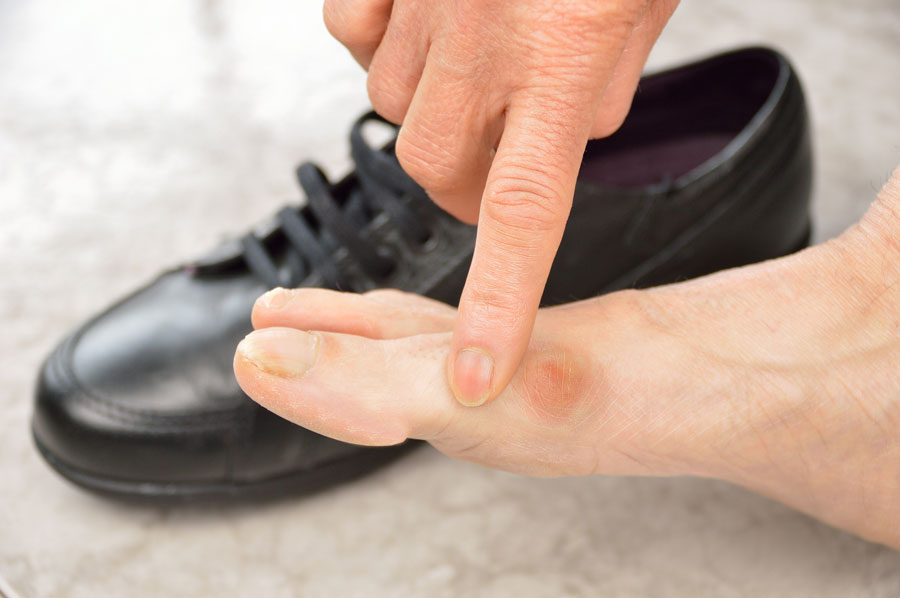
- Leg or foot wounds that are slow to heal
- Unexplained leg pain or cramping, especially during exercise or walking
- Skin problems or discoloration on your legs and feet
- Poor nail growth
If you have poor circulation in your legs and feet, common injuries or conditions can become serious. Potential problems include: (iv)
- Minor wounds
- Blisters
- Bug bites
- Stopping prescribed medications
- Poorly fitting shoes
- Skin burns, such as those from walking on hot pavement
It’s important to note that patients with diabetes may also suffer nerve damage, which makes it difficult to tell when water or surfaces are alarmingly hot. (iv)
Alert your doctor if you notice a sore on your foot or leg and seek emergency medical care for any drastic health changes that may signal a blockage. (iv)
5 Tips for smoking cessation
Smoking and PAD don’t mix, but take heart: withdrawal symptoms should taper off in a week or two. (vi)
If you wish to quit, here are five quick tips to help you get started: (vi)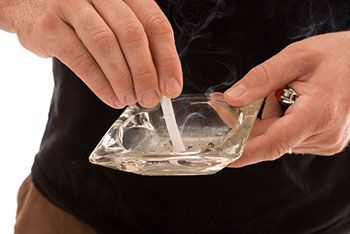
- Make a list of your reasons for quitting.
- Set a quit date and ask loved ones for their support.
- Banish all cigarettes, ashtrays, and lighters from your home, car, and workplace, if possible.
- Do you smoke after lunch or when you’re under pressure? Create a plan to break these patterns.
- Keep your hands busy with a new hobby, like knitting or woodworking.
Treatments for PAD
Prompt diagnosis of PAD and seeing a vascular specialist to discuss your treatment options are critical steps for avoiding amputation due to PAD. (vii)
If the measures above don’t improve your condition and you require advanced vascular care, there is good news: data shows vascular treatments for PAD reduce the likelihood of amputation. (viii) In fact, a study of more than 1 million Medicare patients with critical limb ischemia (CLI), a severe obstruction of the arteries that drastically reduces blood flow to the limbs, concluded that proper intervention from a vascular expert reduced the odds of amputation by 90 percent. (viii) In particular, interventions such as revascularization and atherectomy have reduced lower-extremity amputations for people with severe lower extremity PAD. (viii)
Amputation should be the treatment of last resort. Take steps today to prevent amputation.
Have questions about non-healing sores and PAD? Download our FREE information sheet, or call LEG-DOCS (534-3627) to schedule an appointment with a vascular specialist today.
Sources:
i Cleveland Clinic. Peripheral Arterial Disease and Your Toes. https://health.clevelandclinic.org/keep-vascular-system-healthy-save-limbs/ (accessed April 4, 2018)
ii Temple Health. Avoiding Amputations. https://heart.templehealth.org/patient-care/patient-resources/understanding-heart-vascular-disease/avoiding-amputations. (accessed April 4, 2018)
iii Johns Hopkins Medicine. Peripheral Vascular Disease. https://www.hopkinsmedicine.org/healthlibrary/conditions/adult/cardiovascular_diseases/peripheral_vascular_disease_85,P00236 (accessed April 4, 2018)
iv Cleveland Clinic. This Minimally Invasive Procedure Can Save Your Limbs by Restoring Blood Flow. https://health.clevelandclinic.org/this-minimally-invasive-procedure-can-save-your-limbs-by-restoring-blood-flow/ (accessed April 4, 2018)
v American Heart Association. http://www.heart.org/idc/groups/heart-public/@wcm/@hcm/documents/downloadable/ucm_491938.pdf (accessed April 4, 2018)
vi National Heart, Lung, and Blood Institute. Smoking and your heart. https://www.nhlbi.nih.gov/health-topics/smoking-and-your-heart (accessed April 3, 2018)
vii National Clinical Guideline Centre (UK). Lower Limb Peripheral Arterial Disease: Diagnosis and Management [Internet]. London: Royal College of Physicians (UK); 2012 Aug. (NICE Clinical Guidelines, No. 147.) 12, Major amputation for critical limb ischaemia. Available from: https://www.ncbi.nlm.nih.gov/books/NBK327444/ (accessed April 4, 2018)
viii CardioVascular Coalition. Peripheral Vascular Intervention & Amputation Prevention. http://cardiovascularcoalition.com/cardiovascular-care/peripheral-vascular-intervention-amputation-prevention/ (accessed April 4, 2018)
